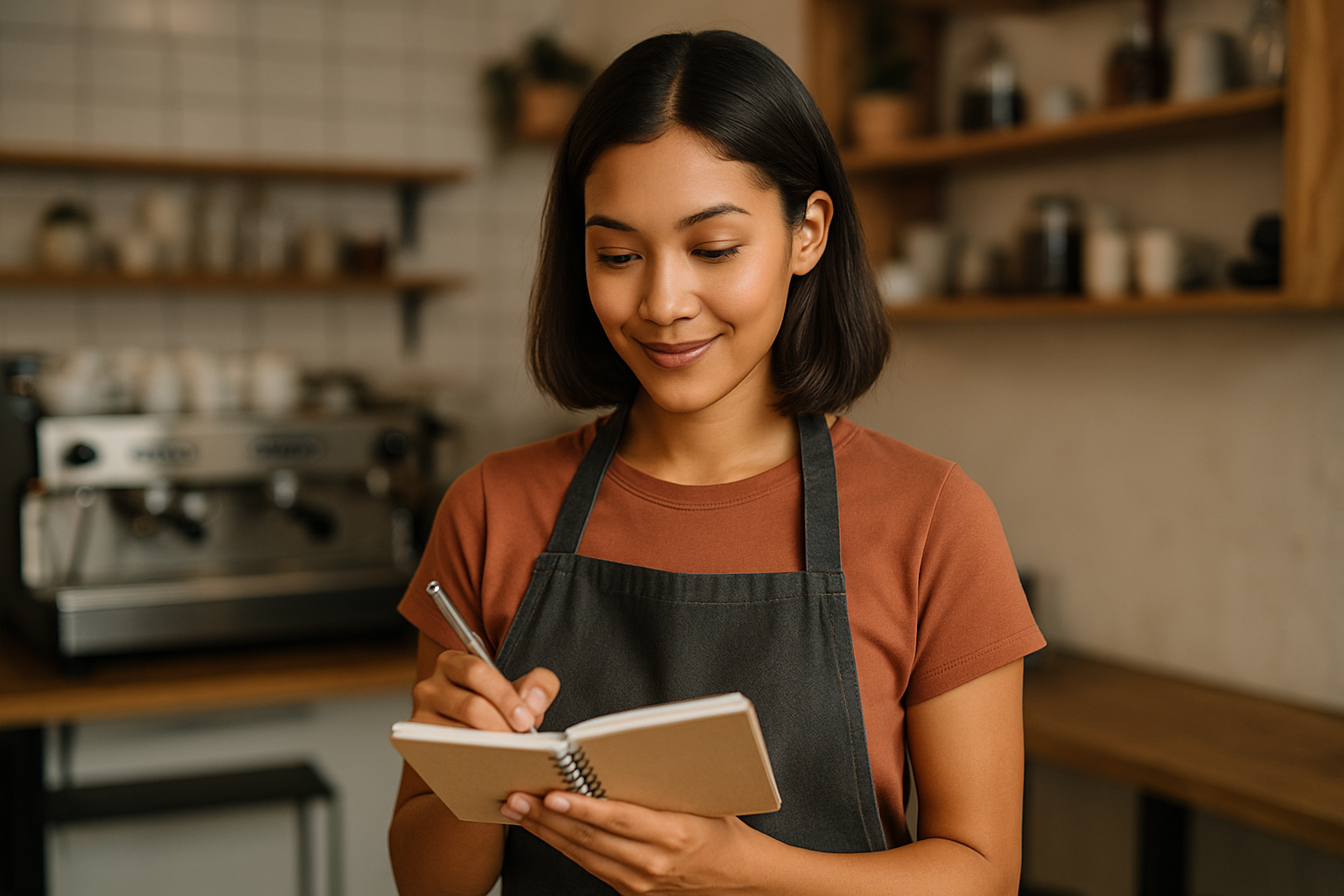Not every barista dreams of working the same café schedule every day. Some crave more freedom, variety, and control over their time and income. That’s where freelance barista work comes in.
Being a freelance barista means offering your skills independently — to cafés, events, businesses, or even individuals — and getting paid per shift, project, or contract. It’s flexible, creative, and full of opportunities for growth.
In this guide, you’ll learn exactly how to become a freelance barista, build a reputation, and start landing clients — even if you’re just getting started.
What Is a Freelance Barista?
A freelance barista is a self-employed coffee professional who works independently rather than being tied to a single employer.
Common freelance gigs include:
- Filling in shifts at short-staffed cafés
- Running pop-up coffee bars at events or weddings
- Teaching home barista workshops
- Providing private coffee service at offices or retreats
- Consulting on café setups or workflow design
Freelancers set their own rates, choose when to work, and have more freedom and responsibility than traditional employees.
Is Freelancing Right for You?
Before jumping in, ask yourself a few key questions:
Do you:
- Enjoy working in different environments?
- Feel confident working solo or taking initiative?
- Want more control over your schedule?
- Have reliable transportation and availability?
- Feel comfortable networking and promoting yourself?
If you said yes to most of these, freelancing might be a great next step in your barista career.
Step 1: Master Your Skills First
Before you can freelance, you need to be good at your craft. You won’t have the luxury of long onboarding or hand-holding. Clients will expect you to show up ready.
Make sure you can:
- Pull consistent espresso shots and dial in grinders
- Steam milk with proper texture and temperature
- Handle peak rushes calmly
- Set up and break down stations efficiently
- Clean, sanitize, and follow health protocols
- Troubleshoot common machine issues
If you’re still new to barista work, take a few more months in a regular role to build confidence. Then, transition into freelancing when you’re ready.
Step 2: Create Your Freelance Identity
Just like any business, you’ll need a clear identity that shows what you do and who you help.
Start with:
- A professional name (your own or a creative brand)
- A short bio or elevator pitch:
“I’m a freelance specialty barista with 3+ years of experience, available for café shifts, pop-ups, and private events.” - A strong online presence (more on that below)
Your goal is to show people you’re not just looking for extra work — you’re offering professional coffee services.
Step 3: Set Your Rates and Services
One of the biggest mistakes freelancers make is not knowing what to charge. Undervaluing your work can hurt both you and the industry.
Consider charging:
- Hourly: $20–$40 USD/hour depending on your location and experience
- Daily rate: For events or full-day coverage
- Package pricing: For weddings, private tastings, or workshops
- Consulting/project fee: For café setup or staff training
Always factor in:
- Your travel time and fuel
- Equipment (if you provide any)
- Prep or setup time
- Taxes (you’ll be self-employed)
Don’t be afraid to charge what you’re worth — just be clear and professional about it.
Step 4: Build a Simple Portfolio
Even if you’ve never freelanced before, you can still show off your skills and experience.
Include in your portfolio:
- A brief “about me” section
- List of services you offer
- Photos or videos of your work (latte art, events, setups)
- Testimonials (if possible — even from past managers)
- Contact info and booking link
You can build this as:
- A one-page website (using tools like Carrd, Wix, or Squarespace)
- An Instagram profile with highlights and pinned posts
- A PDF portfolio you send to potential clients
Your goal is to look trustworthy and ready to work.
Step 5: Start Small and Build Local Relationships
Your first freelance clients will likely come from people you already know — past coworkers, café owners, roasters, or local community members.
Start by:
- Letting your network know you’re available
- Visiting cafés and offering your freelance services
- Joining barista Facebook groups or local WhatsApp communities
- Connecting with event planners and caterers in your area
Tip: Bring a simple printed card or flyer to leave behind. A professional first impression matters.
Step 6: Promote Yourself Like a Business
To succeed as a freelancer, people need to remember you when they need help. That means staying active and visible.
Marketing ideas:
- Post regularly on Instagram or LinkedIn
- Share behind-the-scenes content from shifts or events
- Offer free workshops or tastings to build buzz
- Ask clients for reviews or referrals
- Build a basic email list for updates and availability
You don’t need to be a social media expert — just be consistent and authentic.
Step 7: Be Reliable, Professional, and Easy to Work With
You don’t need to be the most advanced barista in town — but you DO need to be reliable. Word of mouth is everything in the freelance world.
Best practices:
- Always show up on time
- Communicate clearly before and after shifts
- Send invoices promptly and professionally
- Respect the space and staff you work with
- Dress neatly and follow café protocols
- Handle feedback gracefully
A great attitude + great service = more bookings.
Step 8: Get the Right Tools (and Transport)
Freelancing means being ready for anything — so invest in your own kit.
Useful tools to have:
- Tamper and distribution tools
- Scale and timer
- Pitcher and milk thermometer
- Clean apron and bar towels
- Notebook or tablet for invoices/bookings
- Travel bag or case to carry it all
Having your own gear makes you self-sufficient and shows clients you’re serious.
Bonus: A reliable bike, scooter, or car makes logistics much easier.
Step 9: Handle the Business Side
As a freelance barista, you are your own business. That means handling:
- Contracts or at least email confirmations for each job
- Invoicing — use tools like Wave, Bonsai, or even Google Docs
- Record-keeping — track your income and expenses
- Taxes — set aside money for quarterly taxes if required in your country
- Liability insurance — especially for event work or if using your own gear
Start simple, but stay organized. The more professional you act, the easier it is to scale later.
Step 10: Expand and Specialize
Once you’ve completed a few successful gigs, start thinking long-term.
You could:
- Specialize in weddings or corporate events
- Offer consulting for new cafés
- Teach home brewing workshops
- Launch a YouTube channel or course
- Scale into an agency of freelance baristas
Freelancing isn’t a side hustle — it can become a full-blown career path. You define what it becomes.
Final Thoughts: Freelance Like a Pro
Becoming a freelance barista means betting on yourself. It’s not always easy — but it’s one of the most empowering and flexible ways to grow in the coffee industry.
You get to choose your clients.
You control your schedule.
You build your reputation.
And you create a career on your own terms.
Start small.
Stay consistent.
Deliver excellence.
And soon, you’ll be the barista people call when they need the best.

Marcelo Rodrigues is a passionate barista with over 7 years of experience in specialty coffee. He’s worked in top cafés, led barista training sessions, and now shares practical tips to help beginners and coffee lovers improve their skills. Through this blog, Marcel makes the world of coffee more accessible—one cup at a time.

